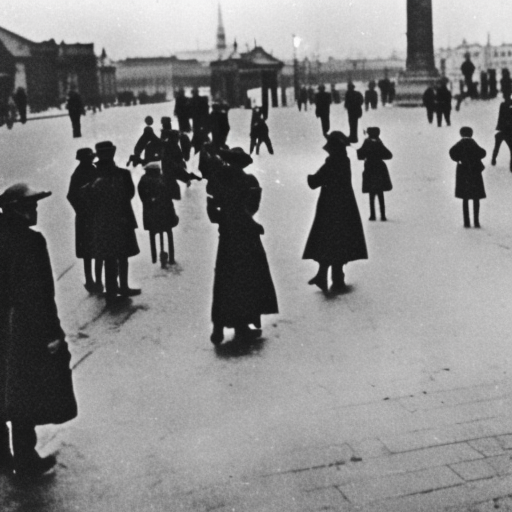Summary: German Revolution of 1918–1919
The German Revolution of 1918–1919 was a period of political and social upheaval in Germany following the end of World War I. It began with the abdication of Kaiser Wilhelm II and the establishment of a republic, and culminated in the formation of the Weimar Republic. The revolution was marked by widespread protests, strikes, and the rise of radical political movements, ultimately leading to significant changes in German society and politics.
Background
The German Revolution was fueled by the economic and social hardships experienced during World War I. The war had drained the country’s resources and led to widespread discontent among the population. Additionally, the military defeat and the signing of the Treaty of Versailles, which imposed harsh terms on Germany, further exacerbated the situation.
Abdication of Kaiser Wilhelm II
The revolution began on November 9, 1918, when Kaiser Wilhelm II abdicated the throne. This marked the end of the German monarchy and the beginning of a new era. The abdication was prompted by a series of strikes and protests across the country, as well as pressure from political leaders who sought to establish a democratic government.
Establishment of the Republic
Following the abdication, a provisional government was formed, led by Friedrich Ebert of the Social Democratic Party (SPD). This government declared Germany a republic and set about drafting a new constitution. However, the provisional government faced challenges from both the left and the right, as radical socialist and nationalist groups sought to seize power.
Spartacist Uprising
One of the most significant events during the revolution was the Spartacist Uprising, led by the Communist Party of Germany (KPD) and the Spartacus League. In January 1919, they attempted to overthrow the provisional government and establish a communist regime. The uprising was met with resistance from the government and right-wing paramilitary groups, resulting in violent clashes and the eventual suppression of the rebellion.
Weimar Constitution
In August 1919, the Weimar Constitution was adopted, establishing the Weimar Republic as a parliamentary democracy. The constitution provided for universal suffrage, freedom of speech, and other democratic rights. However, the new republic faced numerous challenges, including political instability, economic crises, and the rise of extremist movements.
Legacy
The German Revolution of 1918–1919 had a profound impact on German society and politics. It marked the end of the monarchy and the establishment of a democratic republic. However, the Weimar Republic faced significant challenges, including economic instability and political polarization, which ultimately contributed to its downfall and the rise of Adolf Hitler and the Nazi Party.
Conclusion
The German Revolution of 1918–1919 was a period of political and social upheaval that transformed Germany from a monarchy to a republic. It was characterized by widespread protests, strikes, and the rise of radical political movements. The revolution led to the establishment of the Weimar Republic, but also set the stage for the subsequent rise of the Nazi regime.












